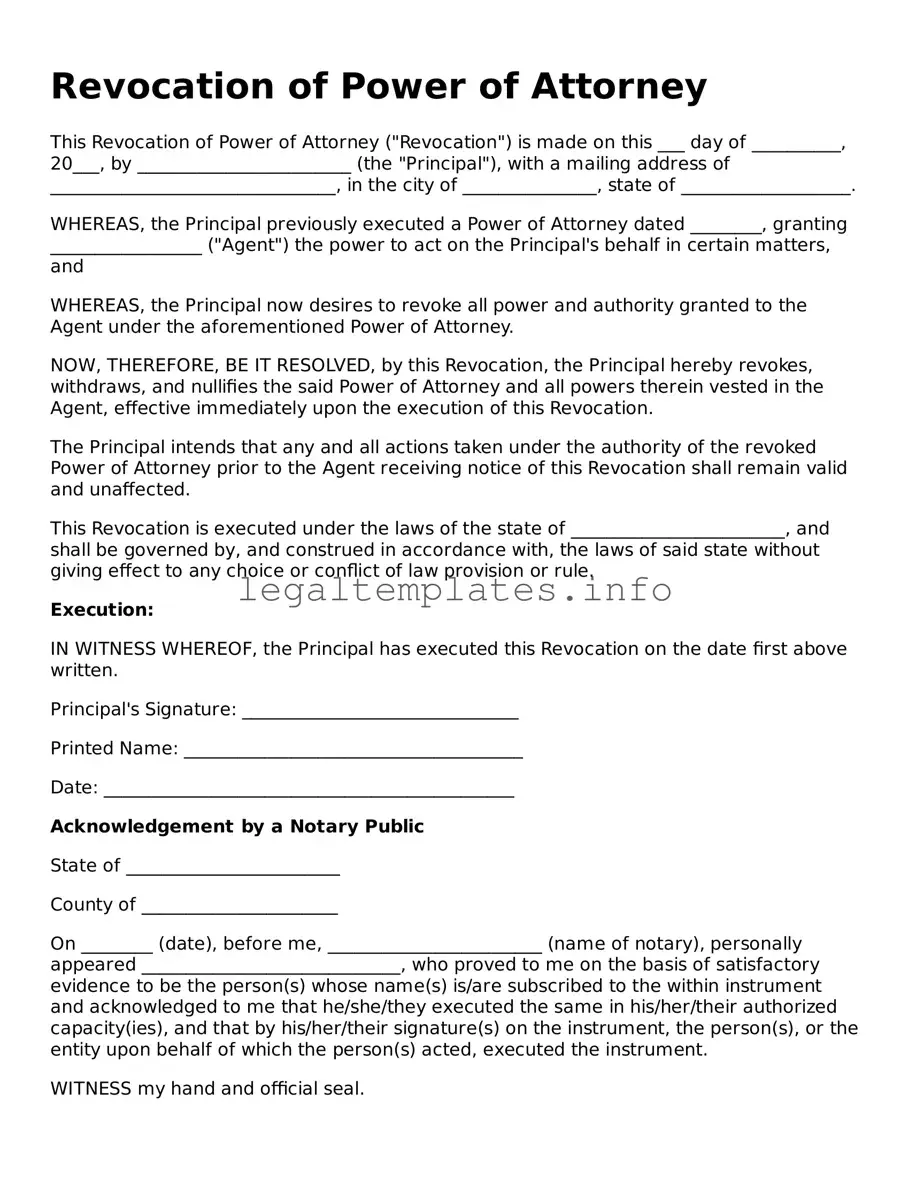Revocation of Power of Attorney
This Revocation of Power of Attorney ("Revocation") is made on this ___ day of __________, 20___, by ________________________ (the "Principal"), with a mailing address of ________________________________, in the city of _______________, state of ___________________.
WHEREAS, the Principal previously executed a Power of Attorney dated ________, granting _________________ ("Agent") the power to act on the Principal's behalf in certain matters, and
WHEREAS, the Principal now desires to revoke all power and authority granted to the Agent under the aforementioned Power of Attorney.
NOW, THEREFORE, BE IT RESOLVED, by this Revocation, the Principal hereby revokes, withdraws, and nullifies the said Power of Attorney and all powers therein vested in the Agent, effective immediately upon the execution of this Revocation.
The Principal intends that any and all actions taken under the authority of the revoked Power of Attorney prior to the Agent receiving notice of this Revocation shall remain valid and unaffected.
This Revocation is executed under the laws of the state of ________________________, and shall be governed by, and construed in accordance with, the laws of said state without giving effect to any choice or conflict of law provision or rule.
Execution:
IN WITNESS WHEREOF, the Principal has executed this Revocation on the date first above written.
Principal's Signature: _______________________________
Printed Name: ______________________________________
Date: ______________________________________________
Acknowledgement by a Notary Public
State of ________________________
County of ______________________
On ________ (date), before me, ________________________ (name of notary), personally appeared _____________________________, who proved to me on the basis of satisfactory evidence to be the person(s) whose name(s) is/are subscribed to the within instrument and acknowledged to me that he/she/they executed the same in his/her/their authorized capacity(ies), and that by his/her/their signature(s) on the instrument, the person(s), or the entity upon behalf of which the person(s) acted, executed the instrument.
WITNESS my hand and official seal.
Signature of Notary Public: ___________________________
Printed Name: ________________________________________
My commission expires: _______________________________
